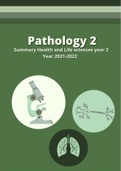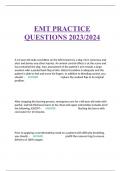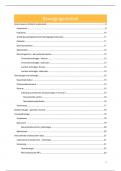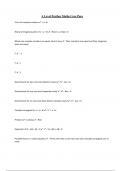Summary
Pathology dt2 summary
- Course
- Institution
- Book
This is a complete summary for the course 'Pathology' of the major 'Biomedical Sciences' of the Health and Life sciences. The summary is in English, because the exam is also in English. A number of things have been clarified in Dutch! THIS IS THE SUMMARY FOR THE SECOND EXAM. For the dutchies: Dit i...
[Show more]








